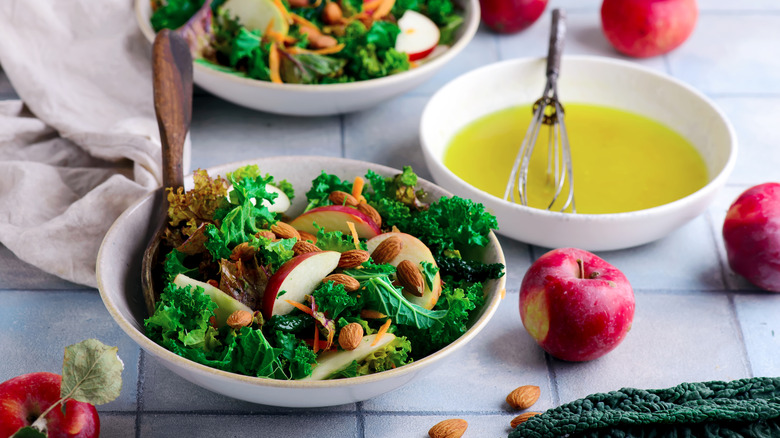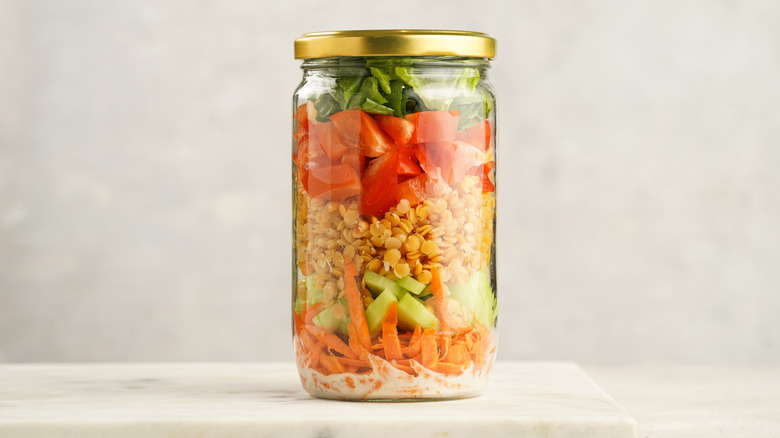How To Ensure Your Next-Day Salad Tastes As Crisp As Day One
A fresh, crisp salad is the perfect lunch and often gives you leftovers to enjoy all over again. However, one common issue tends to emerge — soggy salad. Are the flavors compromised? No, not really, but it loses its satisfying crunch. To prevent this, you have to be sauce-savvy. The trick is to only dress your salad as far as you need to for your initial eating, and leave the rest undressed.
If you're making a salad ahead of time, it's best to leave the whole thing undressed. Sometimes a marinade is good, but this will really depend on the ingredients. Best practice dictates leaving the ingredients dry and packing your dressing or vinaigrette in a separate sealed container. When the time comes to eat, only then toss in the dressing.
This method works best for softer greens like most lettuce varieties, but harder produce like kale gives you more wiggle room. In fact, kale, swiss chard, and even bok choy make excellent long-lasting salad bases and can withstand a light marinade without their crispiness being compromised.
The reason salad gets soggy so easily isn't just because of the natural moisture in the greens themselves. Many salad dressings use vinegar or citrus juice as their base, and this high acidity level breaks down the constitution of most greens. If you think oil is any better, unfortunately, think again. At-home experiments have shown that oil-based dressings also cause greens to wilt quickly as the oil strips away the greens' natural coating protecting its water content. Apart from those sturdier salad bases that are tried and tested to withstand marinating, it's best to leave lettuce totally on its own until the last minute to retain its pleasant crunch.
Storing tips for optimal salad quality
Salad prep is one thing, but how you store it is equally important for maintaining a crisp meal for the next day. One foolproof option is Martha Stewart's mason jar trick, which involves layering your salad ingredients pre-mixing, starting with the dressing on the bottom and ascending levels of least to most soluble ingredients — in other words, lettuce on the very top.
Following this line of thought, layering and somewhat separating your ingredients will give the salad the best chance of staying fresh and crisp overnight. In an airtight container, layer your ingredients with pieces of paper towel in between each tier. This may seem like a lot of extra work, but many salad ingredients contain high levels of moisture, so preventing them from interacting with one another will go a long way to preserving their original texture.
Ideally, keep your harder, drier components altogether separate from your more moist ones. Tomatoes and cucumbers can be kept together — while chicken, broccoli, green onions, and the like, should be retained elsewhere. Ingredients like croutons, nuts, and cheese should preferably stay in their original packaging and not be mixed into the salad until assembly. Better yet, incorporate nuts into your dressing to amp up the flavors of your crisp salad.


